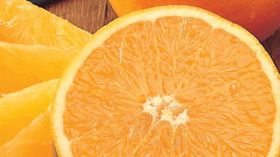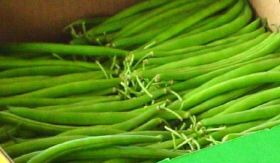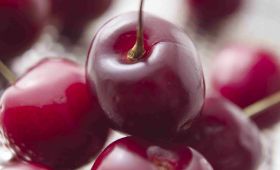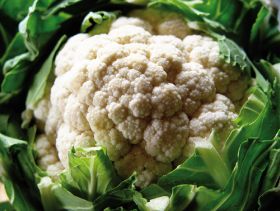
The FPJ Big 50 Products ranks the 50 best-selling fresh fruit and vegetable products by sales value, using Kantar Worldpanel data for the 52 w/e 20 May 2018.
21. Oranges
Value: £170.6m (-1.9%) Volume: 96.3m kg (-6.9%)

Tough times for oranges as rivals steal a march
Oranges have been in stasis for some time, and it’s hard to see a way out. In 2018 they dropped a place and have declined in volume for the third straight year. They lack promotional activity, or a partner in crime, like lemons have with drinks.
Furthermore they have a more popular substitute. “More and more people are moving to the easy peel category instead of purchasing oranges. They are easier to peel, more convenient for children and lunchboxes, snacking, and there’s less mess,” says Matthew Embrey, senior commercial manager at MMUK. “This also means that basket size and amount of fruit purchased per customer is lower as people only want one or two oranges, moving away from large packs.”
As with other South African crops, weather hit oranges in the past year as they too “suffered from extremely hot temperatures during flowering period, causing issues with fruit set, which resulted in a lot of fruit drop in the farms,” Embrey says.
It’s not all doom and gloom for oranges, however. “A bonus to the orange category is the increasing popularity of blood oranges, particularly from Sicily,” he says. “It’s a fantastic piece of fruit, but not a year-round product to lift the sales,” he adds.
22. Beans
Value: £156.3m (-0.5%) Volume: 33.8m kg (+1.6%)

New consumers needed to boost bean sales
Sales of beans are holding up well, with a 1.6 per cent volume increase showing consumers are still enthused by the offer, but for the long term getting new shoppers to buy into the category will be key.
There have been some changes to the sales mix, with runner beans continuing to lose ground to French and helda beans, according to Tozer Seeds’ commercial director David Rogers, with the acreage of flat, stringless and milder bean plantings increasing.
“Runner beans tend to be something older people eat,” he adds, “though it’s a bit of a strange one in that so many people also grow them in their allotments and gardens. Work is going on to develop a smaller runner that doesn’t require any preparation and is more like a French bean.”
French bean plantings are increasing, while the broad bean offer remains steady, and production in Kenya and other new African entrants continues to indicate a positive picture.
For the future, Andrew Green of AS Green, who says growers are struggling with this summer’s hot weather, believes attracting a younger customer base will be crucial to the category. “We need it to be seen more as an ingredient than a vegetable,” he points out.
23. Melons
Value: £155.3m Volume: 153.1m kg (-0.9%)

Melons bask in glow of hot summer
There’s nothing that helps melon sales quite like hot weather, so suppliers will be rubbing their hands with glee at this summer’s prolonged heatwave.
Waitrose acknowledged as much this month when it reported melon sales up 15 per cent against the same week last year, and if replicated across the supermarkets that should give next year’s figures a real boost.
“We’ve seen amazing demand for some time, not just in the UK but across Europe and it’s been hard to keep up,” says Terry Watts, chief executive of Vidafresh.
That’s not to say life is easy in the melon category. Import and production cost increases have contributed to price rises, and a difficult season in Brazil has made it a challenging balancing act for importers. Predicted freight rate increases could add further cost in the coming year.
That aside, the category is in a good place. As Watts points out, the industry has spent a lot of time and money delivering a melon proposition that hits the mark in terms of taste and quality, a situation that is giving “consumer satisfaction every time”. And with the burgeoning fresh-cut market – watermelon pieces are now even appearing in meal deals – expect this category to see further strong growth.
24. Cherries
Value: £127.5m (+20.9%) Volume: 21m kg (+13.5%)

Cherries back on track despite weather worries
After a disastrous season in 2016 led to a 16 per cent fall in cherry value, their return to growth over the past year was to be expected after a bumper crop brought the shine back to the cherry market, which is one of Britain’s fastest-growing fruits.
“Most of what is driving the volumes is new orchards,” says grower Michael Dallaway, of Dallaways Cherries. He adds: “The amount of cherry orchards have increased vastly in the last five to 10 years. This summer has been fantastic and has meant sales are on the up again.”
Varieties like Kordia and Regina, which are sweeter and firmer, as well as being more forgiving to growers, mean that quality is more consistent. Dallaway says their seasonality is also a plus for consumers. “They are perhaps one of the last truly seasonal products left; you can get cherries from other parts of the world during winter but they’re not as good. There’s real awareness about their seasonality. Year-on-year volumes will keep going up,” he points out.
This year’s heatwave has prompted concerns of another shortage, and volumes will certainly be down on last year, but Dallaway is hopeful it won’t significantly affect the tunnel crop.
25. Cauliflower
Value: £122.7m (+1.6%) Volume: 111.8m kg (-5.1%)

Rain then heat hits caulflower volumes
Cauliflower, like broccoli, was hit hard by rain and club root last summer – and this was a major factor behind the 5.1 per cent fall in volume sales. According to Greville Richards, managing director of Southern England Farms, there were “quite a few companies” going short of the brassica in 2017, with wet weather also disrupting plantings of winter crops. Yields were down 20-25 per cent, he reports.
This year’s hot, dry summer is causing crops to back up and further shortages look likely. George Beach of Mudwalls Farm in Warwickshire expects erratic availability and higher prices across all brassicas this season, speculating that volumes could halve. A lot depends on when the rain falls, with growers having to continually irrigate their crops just to keep them alive.
Despite these challenges, varietal development continues to breathe new life into the category with green, red and yellow varieties entering the market. Cauliflower has remained in vogue as a versatile alternative to carbohydrates and it continues to be used in new formats such as cauliflower rice and cauliflower steaks.
And despite many competing products on shelves, if the category can continue to innovate there could be potential for further growth.



